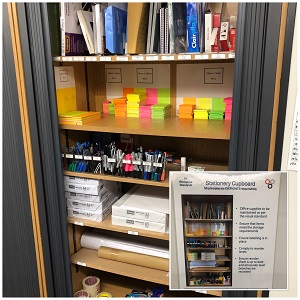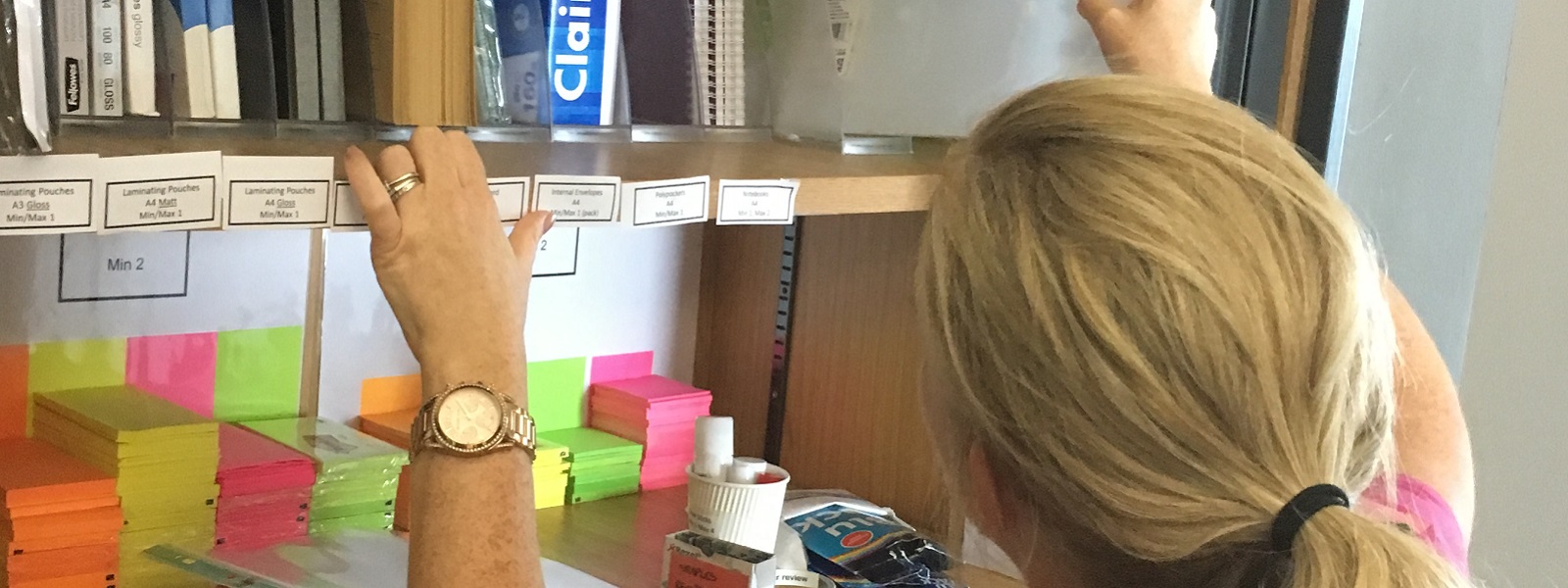Background
You may remember at the end of 2018, we published a series of six blogs written by Graham Ross on 5S Workplace standards. From reading those blogs and perhaps, hopefully, following suit to review your own workplace, you’ll remember that the final ‘S’ stands for ‘sustain’.
One of the sustainment methods that we use is to carry out a daily workplace assessment at the end of each working day. This is done on a rota basis, assessing each area of our office space against the standards that we set for it. This ensures that the standards we have agreed on are being met. Where we’ve failed to meet the standard, we discuss this as a team to establish the cause and agree on a way to resolve the issue to get us back up to the agreed standard.
In addition, and with an eye on continuous improvement, we review the standards on a quarterly basis. These quarterly reviews (of our 5S standards) are conducted by two members of the team, rotating each quarter so that everyone in the team has some input throughout the year. Reviewing the standards regularly is important. If you’re not careful, workplace assessment could turn into a ‘tick box exercise’ routine where you do not pay full attention to the standards.
Standards need to be reviewed regularly. Things will change in both the working environment and in our working practices. For example, new employees might join the team, resulting in a need to rearrange office furniture. Perhaps you stop offering a particular service and as a result, some of your equipment is no longer required. 'Do we still need this?' 'Why are we keeping that?' 'When did we last use that?' 'Is there a better place to keep that?' These are questions that should be asked regularly.
Reviewing the current standards is also an opportunity to identify and implement improvements to the working environment, which are underpinned by the new standards that you have developed following a review.
What we did
We (collectively known as ‘the Susans’, imaginative isn’t it?) were recently paired up to review the standards. We blocked time out in our diaries for the task. This may sound trivial but if you do not set aside dedicated time for this, there’s an increased likelihood that it will always take a backseat to other tasks.
A word to the wise, do not get in the way of ‘the Susans’ when they are on a mission to review the standards. You might find yourself on a shelf with a label indicating that you need to be reordered, or stuck to the wall by an industrial strength command strip (just to protect the paintwork).
 Although we reviewed the standards of the whole office environment, for this blog we’ll look specifically at the example of our stationery cupboard.
Although we reviewed the standards of the whole office environment, for this blog we’ll look specifically at the example of our stationery cupboard.
In the words of Graham, “Set in Order is meaningless unless everyone knows where things are kept and how to find them”. As we carried out our review we realised that team members did not know where certain items were stored. For example, the command strips. We had only recently started to use command strips to protect our freshly painted project room walls, therefore, they had not been given a specific location in the stationery cupboard. Our solution? Review the current standards in the cupboard and rearrange them slightly to create an identifiable location for the command strips.
The result
We have had many visitors to our offices who have commented on our standards. They very often leave having taken photos of the standards with the intention of implementing these in their own area. Each visitor has possibly taken something different away with them (but not any of the stationery as we would easily notice that what with our reorder levels). Some may leave with a solution to the problem of rooms being left in a mess, others with a want to clear their office of unnecessary clutter or a solution to running out of essential stationery every month.
Although this section is titled ‘The result’, it’s not a result. Workplace organisation is continuous. There is no end result as standards are fluid, changing along with the people, the type of work, and the environment. That’s why regular reviews are essential. Not only do they help prevent you from slipping back into old habits, but they also provide an opportunity for improvement each time they are reviewed.
If you did follow the advice in the original series of blogs and review your workplace, please follow this advice now too. Set up regular reviews of your 5S workplace organisation standards.



